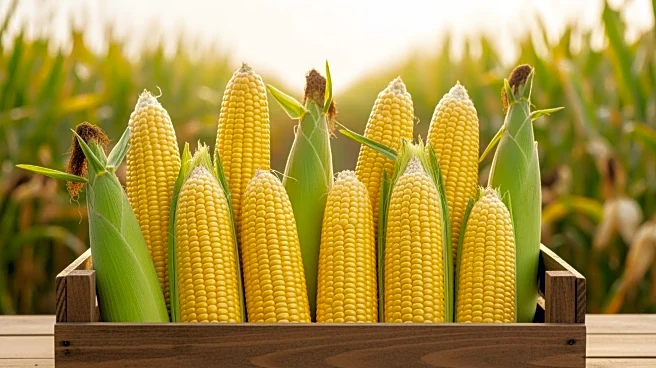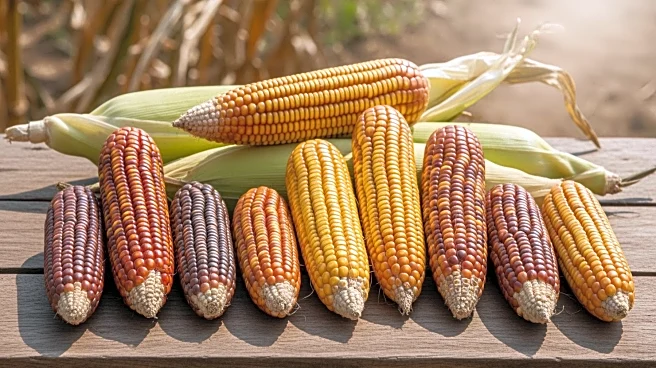What's Happening?
Agronomists across the U.S. Corn Belt have described October's impact on crop yields as highly variable. According to agronomic service representatives from Syngenta Crop Protection, the corn harvest progress
and yields varied significantly across different regions. In Wisconsin, Nick Groth noted that while southern Wisconsin saw nearly all corn harvested, northern Wisconsin still had over 50% of the crop standing. Yields ranged from record highs in east-central Wisconsin to average or below in other areas, influenced by disease pressure and fungicide applications. Similar variability was reported in Minnesota and Illinois, where factors like soil quality, planting times, and weather conditions affected yields. Iowa State University's Meaghan Anderson described the harvest as 'speedy,' with rapid maturation and drying out of crops. Jared Goplen from Wyffels Agronomy highlighted the challenges faced by crops due to diseases and weather conditions, yet noted a surprisingly rapid harvest.
Why It's Important?
The variability in crop yields across the Corn Belt has significant implications for the agricultural sector and related industries. Regions experiencing lower yields may face economic challenges, impacting local farmers and agribusinesses. Conversely, areas with record yields could see increased profitability and market competitiveness. The variability also underscores the importance of disease management and adaptive farming practices in mitigating adverse effects. This situation may influence future agricultural policies and research priorities, focusing on resilience and sustainability. The broader economic impact could extend to food supply chains, affecting prices and availability of corn-based products.
What's Next?
As the harvest season concludes, agronomists and farmers will likely analyze the factors contributing to yield variability to improve future crop management strategies. Discussions may arise around enhancing disease resistance and optimizing planting schedules. Stakeholders, including agricultural companies and policymakers, might explore investments in research and technology to address these challenges. The USDA's resumption of crop progress reports could provide more comprehensive data to guide decision-making. Additionally, the agricultural community may advocate for support measures to assist regions with lower yields.
Beyond the Headlines
The variability in crop yields highlights the complex interplay between environmental factors and agricultural practices. It raises ethical considerations regarding resource allocation and support for struggling farmers. Long-term shifts in farming practices may emerge, emphasizing sustainability and climate resilience. The situation also reflects broader environmental challenges, such as climate change, impacting agricultural productivity. These developments could influence cultural attitudes towards farming and food security, prompting increased public awareness and engagement.













